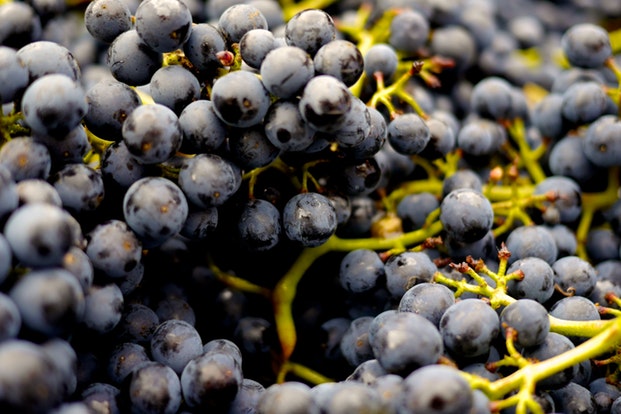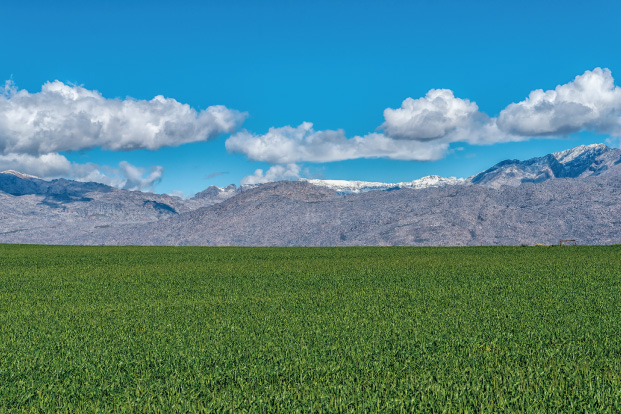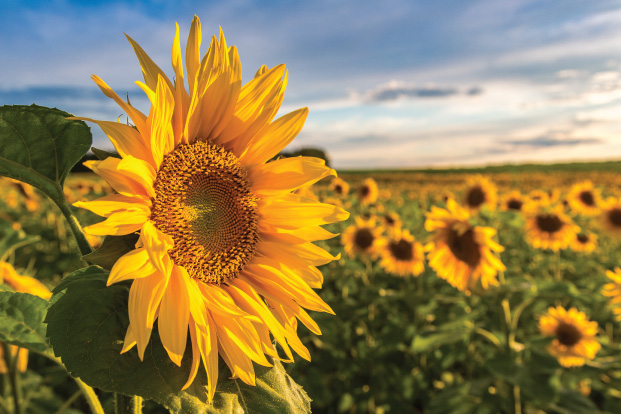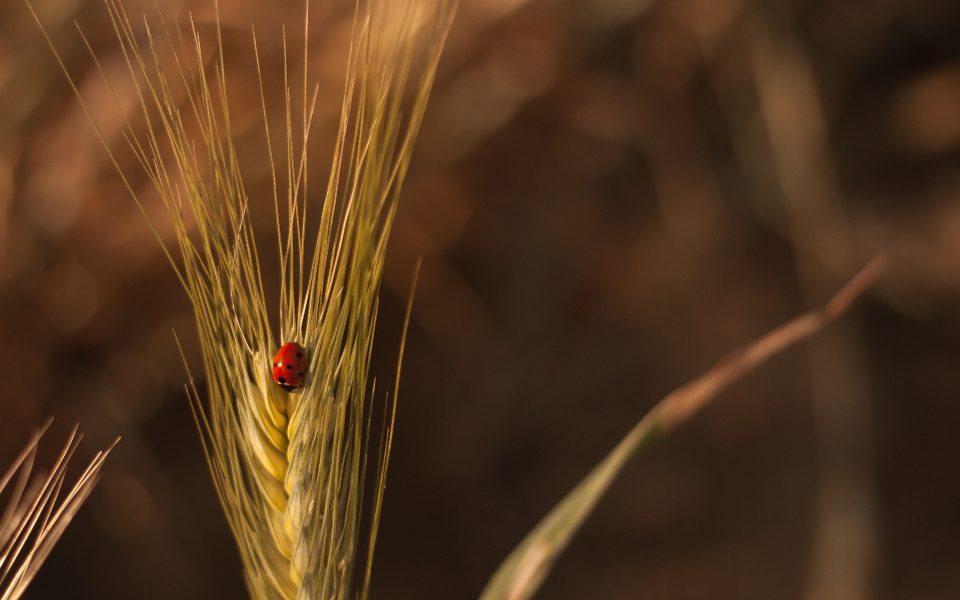Table grapes: speeding up production in new vines

Impact of the drought on Western Cape farmers
February 28, 2018
Big data drives finance to agribusiness in Africa
March 5, 2018
Producers often face a Catch 22 when it comes to the establishment of new vineyards. New vines are essential for sustainable production, but establishment costs can run to between R350 000/ ha and R450 000/ ha, while maintenance costs come to about R250 000/ha/year.
The situation is obviously far more challenging for producers with limited capital.
To alleviate the impact of new vineyards on his cash flow, Warren Bam, who farms table grapes on leased land near Saron in the Western Cape, works hard to ensure that his vines produce fruit the year after establishment.
“The vines are planted in winter. So, if they’re planted in 2016, the vines are pruned for fruit during the next winter to be harvest-ready from around January or February the year thereafter.
The aim of the pruning is to get the vines on the gable wires as soon as possible,” explains the Western Cape Agricultural Writers’ 2017 New Entrant to Commercial Farming of the Year nominee.
A new global trend
Harvesting vines from such an early stage was frowned upon until recently, as it was thought to shorten their productive life. Even today, most producers prefer to wait another year before harvesting.
But earlier production has become a trend in many of the leading table grape-producing regions of the world, from Chile to California in the US, according to Warren.
In addition to harvesting early, Warren chases volume. His vines produce between 3 000 and 3 500 cartons/ ha during the first harvest and approximately 5 400 cartons/ ha from the second season of production.
The industry average is 4 000 to 4 500 cartons/ha, depending on the production area and cultivar. (Each carton is 4,5kg.) What’s more, he achieves these yields with organic production methods.
So what is his secret? It starts with the cultivars, which are selected with considerable care. Since the varieties are destined for organic production, they need to be relatively hardy, resilient and ‘labour-friendly’.
“One of the first questions I ask when selecting a new black or red variety is whether it can colour by itself. If not, I scratch it from the list. The same applies to vines prone to bursting during precipitation,” explains Warren.
His chosen varieties are all seedless and, most importantly, in high demand. “It doesn’t help if a variety ticks all the right boxes, but nobody wants to buy it!” he says.
Well worth the extra cost
All his varieties are sourced from commercial breeding programmes, as these breeders have a vested interest in the success of their cultivars.
“These varieties are more expensive and subject to annual royalties, but the higher yields, good market prices and lower management costs more than compensate for the added cost,” says Warren. “You’re doing something wrong if you fail to produce above-average yields with these cultivars.”
Red varieties planted by Warren include Jack Salute, Sweet Celebration and Allison, white varieties include Arra 15 and Sweet Globe, and black varieties include Melody, Sugra 34 and Adora Seedless.
“I go out and look at the varieties while they’re still on trial to ensure they’re performing well,” says Warren. “Arra 15 caused me some anxiety, because there were rumours it had issues with internal browning, but it proved to be my best-paying variety.”
Unlocking potential
Warren started working as a farm manager on Lushof Farm in Porterville in 2004, and launched his own farming business in 2014. Since then, he has established 37ha of vineyards, of which the government subsidised 26,5ha.
Some 16ha are now in production, another 2,5ha will go into production this coming season, and an additional 18,5ha will be harvested the season thereafter.
Optimising the soil
Warren emphasises that a vine will reach its full genetic potential only if planted in correctly prepared soil. “It’s better to plant nothing than neglect soil preparation, as mistakes are too expensive to fix later,” he says.
To ensure it is done properly, he consults a soil and irrigation specialist. Profile holes are dug every 50m x 50m and inspected to identify soil type, potential drainage issues and other aspects. Samples are taken and sent to a laboratory for analysis.
The results are used to remedy soil imbalances and drainage problems, to determine whether the soil should be ripped or tilled (and how deep), to address potential disease threats, and to guide irrigation design.
Thereafter, vines are planted with nothing but the soil that comes out of the planting holes.
“I won’t add compost or anything else to the planting holes and risk scorching the roots of the new vines,” says Warren.
Approximately 2 200 vines/ ha are planted at a time.
Fertilisation
Warren applies small quantities of Talborne Organics’ 5:1:5 granular fertiliser weekly from September to December in the newly planted vineyards. The fertiliser is applied underneath the drippers to wash it into the soil.
A year later, Warren applies 5:1:5 at a rate of about 1t/ ha on three separate occasions. About 40% is applied during budding, 20% during flowering, and 40% after harvesting to boost plant reserves for the next season.
Guano from Namibia is applied at a rate of 40g/ plant to 50g/ plant at budding and again after harvesting. Compost made on the farm is applied just after winter, usually every second year, but annually in vineyards that require more organic material.
“I’ve supplied up to 40m³/ ha in low-potential vineyards for three years, and they performed just as well as some vineyards on better soils,” recalls Warren.
Leaf samples are taken just before flowering to identify nutritional shortages. “Most organic products are slow-releasing, so one must ensure that the nutrients applied are actually available to the vines when they need it. Organic foliar feeds are used to address immediate shortages,” he explains.
Weeds are removed by hand, and cover crops – anything from triticale to oats – are planted between the rows to reduce competition between weeds and vines. Self-seeding cover crops, which require replanting only every third year, are used. In addition to reducing competition with weeds, the crops improve soil structure and health.
Dealing with pests
Downy mildew and powdery mildew are Warren’s greatest pest challenges. He sprays copper- and sulphur-based fungicides prophylactically once a week just before the vines emerge from hibernation.
“I’ve been doing this for 14 years and it still works like a dream,” he says. “The only thing is that most organic products, such as copper and sulphur, only work on contact. So they must be applied just after the rain and once more if it rains again a few days later.”
Warren uses traps to identify potential insect pests such as thrips and leaf miners, and sprays Entrust to manage these.
Workers
A farm’s success is of course highly dependent on its workers. “I really strive to look after the people who look after me and have set myself a goal of improving at least one of the houses in which my labourers live, every year. Most of my workers live in RDP houses near Saron,” he explains.
In addition to this, he pays his workers an annual bonus.
Source: Farmer’s Weekly



